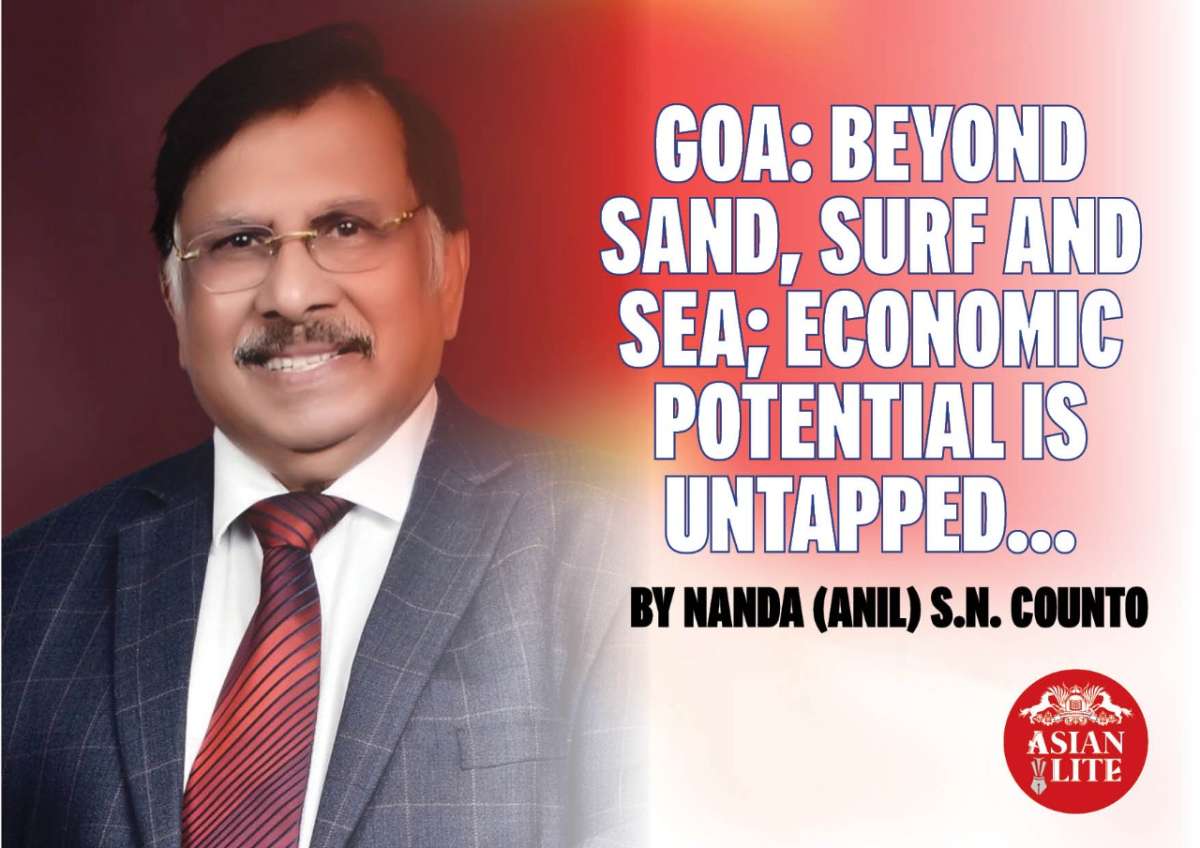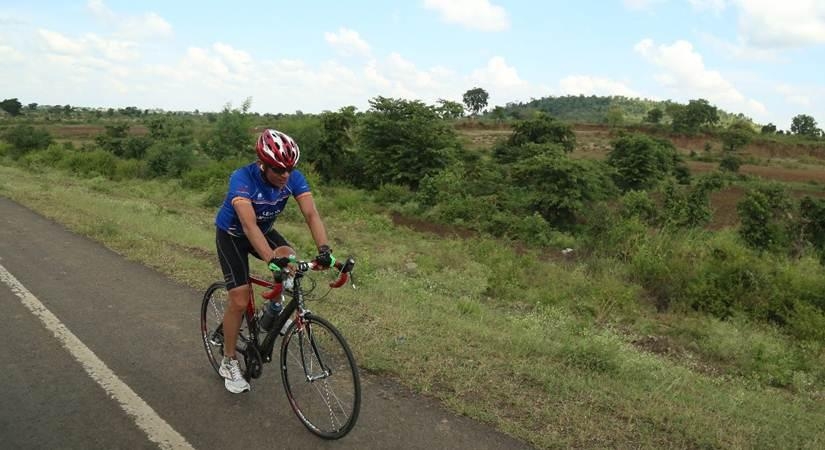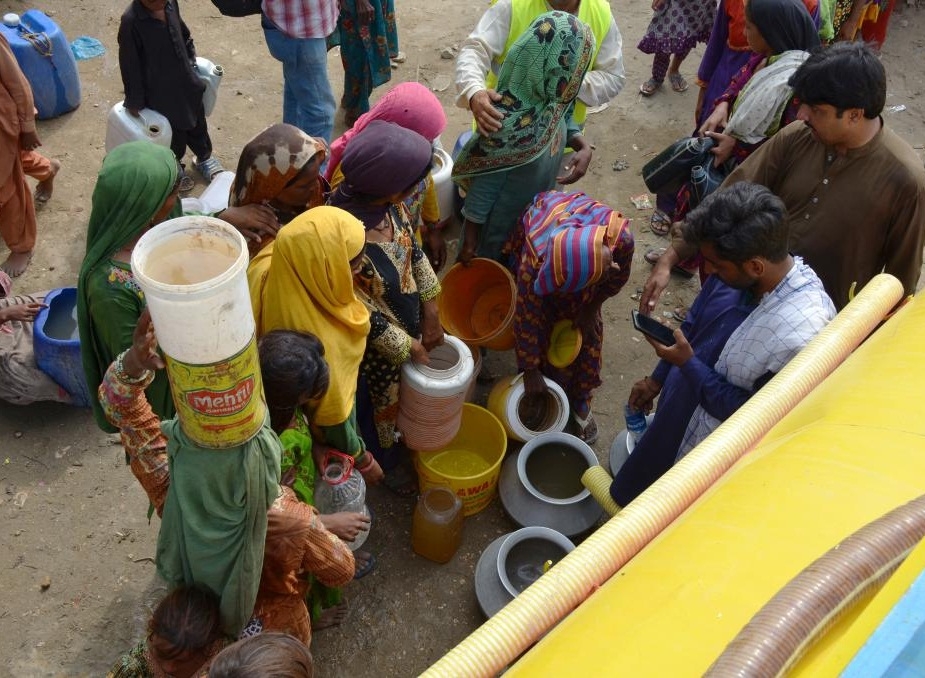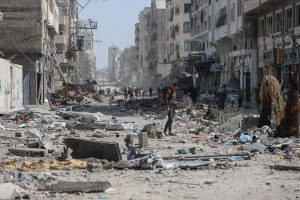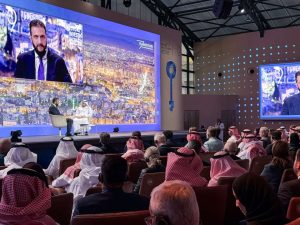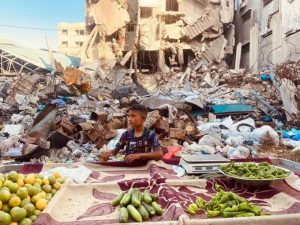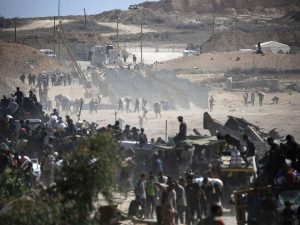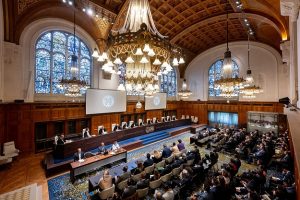In a detailed economic analysis Goan entrepreneur Nanda (Anil) S.N. Counto, Chairman and Managing Director at ALCON (Anil Counto Enterprises) elaborates the current economic scenario in Goa and recommends solutions to pull out the state from its gripping economic crisis and flourish in abundance
Goa is on the threshold of growth. The Mopa airport that was recently inaugurated will boost tourism and cargo logistics in the state. The auctioning of Mining as per the latest advice of the Supreme Court which was a long pending issue stands resolved. The Government of Goa will earn handsome fair amounts from this auction on an annual basis and export revenue on a per ton basis. Goa can arguably have the highest GDP as well as per capita income in India provided there is less political intervention and corruption.
It may be recalled that in the month of June 2012, after the late Manohar Parrikar took over the reign of Goa after the BJP party got elected and before the closure of mining in Goa and when the Shah Commission was appointed mining and hospitality business the main two life-lines of Goa on the economic front. Since then it’s argued that the following industry verticals should be considered for a turnaround for a prosperous Goa on the economic front and outlined them in the order of preference: 1. Mining 2. Tourism and Hospitality 3. Knowledge Village 4. Agriculture 5. Horticulture & Floriculture 6 Pisciculture 7. Animal Husbandry and Poultry 8. IT and IT-related ancillaries 9. Pharmaceutical Industry 10. Mormugao Port & Docks 11. Renewable Energy; and 12.Other industries.
The above industry verticals are divided into three (3) main economic segments, viz. 1. Primary economic sector 2. Secondary economic sector; and 3. Tertiary economic sector. I had felt that in the economic sector, we must prioritise and lay more stress on the economic upliftment of Goa. These were predominant thoughts in the year, 2012. However, COVID – 19 and the devastating closure of the entire mining sector changed the entire economic format.
After experiencing what is happening in Goa at present, mainly due to mining closure and COVID – 19 and subsequently due to lockdown: businesses and industries were totally or partially hit resulting in diminished revenues to all business ventures as well as to the Government in terms of reduced taxes and revenues. The financial year of 2020 – 2021 and 2021 – 2022 have been totally disrupted by the fall in revenue in every business thus two to three years more would be needed to settle down for all businesses.
Goa has witnessed an economic crisis in the last decade ever since the cessation of the mining business which was one of the most important sectors for employment for the people as well as for the state’s GDP growth. In the financial year 2020 – 2021 and financial year 2021 – 2022 Goa has suffered miserably mainly because of (1) the COVID – 19 pandemic (2) The tourism sector which was playing an important factor in boosting GDP growth was in doldrums; and (3) The mining sector was also almost closed, in a nutshell, both the industry verticals that is hospitality and mining sector were closed; thus adversely affecting GDP as well as employment for the State of Goa.
Positive growth signs are seen and this is possible if and only if both the public and private sector actors are in unison and with total cooperation. The government should mainly look after the governance, and the private enterprise should act and deliver the goods responsibly. A sincere joint public-private sector participation and cooperation will help considerably.
Today, we cannot be dependent on the mining sector anymore due to the vagaries of the international market forces and because of the spike in export duty. The GOI in principle has decided to give more importance to local manufacturing of iron and steel through “Atmanirbhar Bharat”. As such, the Goan grade of iron-ore which is of a lower grade of 58% may not be very suitable for the local steel industry since it was tailor–made and suitable for export. However, The Government of Goa (GOG) will find some means to activate the mining activities, but alas, it may not be the main dependable industry any longer to boost the GDP growth of the State. Henceforth India has to develop the technology for iron-ore gradation to utilise Goan iron ore as well as high-grade iron ore from other parts of the country for steel production and try to compete with China, who has superbly mastered the technology to upgrade low-grade iron ore.
There will be a cascading effect on account of the increase in customs duty as well as the closure or reduction in mining activities and all other related industries, particularly barge business, heavy machinery requirement for mining business, ancillary business for this heavy machinery equipment, logistics business for trucks which were thousands in number which means the truck drivers, cleaners and other ancillary industries dependent on the trucking business will be adversely affected. GOG should seriously work out strategies to overcome the above negative impact on Goa’s GDP.
In order to increase the GDP (Gross Domestic Product) or GVA (Gross Value Added), we have to concentrate on every economic sector viz. Primary, Secondary and Tertiary economy sectors should be given due importance in the following order: The primary sector which deals with raw materials, the secondary sector deals with manufacturing and the tertiary sector deals with services.
The Primary economy sector in Goa has not been explored to its full potential.
As far as Goa is concerned, the Primary economy can be categorised in the following industry verticals. 1. Agriculture 2. Horticulture 3. Floriculture 4. Pisciculture 5. Animal Husbandry and Poultry 6. Forestry; and 7. Mining Sector, mainly raw materials. In the Secondary economy: The pharmaceutical industry and other large and MSME Industries are situated in the government industrial estates i.e. All kinds of manufacturing industries can be included. In the tertiary economy: tourism, Hospitality, Information Technology knowledge, knowledge village, entertainment and finance, and all types of service industries are to be included.
The primary economy requires adequate attention and also tertiary economic sectors for the State’s GDP growth. The Secondary economy sector will definitely help as it is connected with all SMEs and also small and large manufacturing units. Growth and proper planning of Primary and tertiary sectors can become a game-changer for employment which will boost the economy of the State.
Primary economy sector:
1. Agriculture
Goa has vast uncultivated land, mainly because of the perception of local people that to work in the fields is below their dignity. Goans by and large do not want to do hard physical labour. Moreover, most of the land owners are given to dispose – off their lands to real estate owners rather than utilise the land to cultivate.
The Goa Government should come out with special incentive schemes for these land owners, either to join together and bring at least 25 acres of land under one umbrella, by safeguarding the individual owners’ lien on the land and allow them to make some sort of consortium and convert this land for agricultural purpose to produce different agricultural products. Today with digital advancement and enabled ideas and new technology wide varieties of agricultural products can be grown, which enables forward integration and improves the growth of the secondary economic sector.
A special incentivised scheme can be drafted which could encourage tenanted land as well as uncultivated land, including orchard land, and get the tenants and landowners to come together under a special scheme to allow such land to be leased to private entities, with clear and specific conditions so that the owner does not lose his / her right on land but also the tenants, as well as the land owners, get the benefits that their land is given for a productive cause. The Government of Goa or the Private sector can definitely work out a credible scheme on the above lines.
2. Animal Husbandry & Poultry
Poultry as well as animal husbandry can be handled in such a way that a special incentive scheme is worked out by the government so that many related products can be processed. The required attention and weightage has not been given to this Primary economic sector. Collateral products and bye-products from animal husbandry especially from the cow and allied animals should be used for commercial purposes. The 50% of milk requirement in Goa is being brought from outside the state. The government says that this milk is adulterated and not good for consumption. Cow dung as well as cow urine and many other collateral by-products can boost Goa’s economy as well create more employment if proper attention is given and their use explored, professionally.
3. Forestry
Goa has significant forest area Private as well as government which are approximately 34% that is much higher compared to the forested area in the country. Yet these forests do not give any tangible benefits to the GDP and growth of Goa. A scheme has to be worked out without disturbing the delicate ecology and environment to make use of these areas for GDP as well as employment growth, and this can be done.
4. Fishing and Pisciculture
Goa has many rivers and rivulets also about more than 150 kms of sea frontage. Special schemes may be provided to explore fishing in the inland waters as well seaward side. Again through this vertical of the primary economic sector, huge employment can be provided and we may use the latest technology to explore this industry for fishing and allied products, which can be done with good results – professionally.
5. Floriculture and Horticulture
Goan land is the most ideal place for the growth of this industry viz Floriculture and Horticulture. Every day tons of goods in this sector come to Goa from different places. The area by the side of roads can be developed for horticulture which will also beautify the roadsides and driving will be a pleasure. The hinterland can be used for horticulture -to grow different types of fruits and vegetables, which will help the secondary economic sector as a forward integration for canning and other types of industries.
6. Mining
Due to the multifarious restrictions on the extraction, sale/export of iron ore, we may not be able to secure the same benefits which Goa used to get before the closure of the mining sector. We can still work in this sector as a raw materials provider for internal consumption in India and also mining can be explored within the strict framework of the Government of India mining rules and regulations.
The Government of Goa should give importance and come out with some beneficial schemes for aggregate business, manganese business as well as special high-grade iron ore business. The Government of Goa as well as Goans should address this mining business differently and think of “out of the box” solutions which are implementable.
A proper strategy should be adopted to use these raw materials for the upliftment of the secondary economic sector which is manufacturing as well as the growth of the tertiary economy which is the service industry.
Goa does not provide adequate raw materials which are normally required by the manufacturing industry thus these are bought from other parts of the country. Raw materials can be used by the industry for forward integration as an input to the state’s industry and finished products can be sold to other parts of the country if the product is in excess.
Secondary economic sector
The raw materials for the Primary economic industry such as agricultural products, animal and poultry products, fisheries and pisciculture products, floriculture and horticulture products and mining products are used for growth and the forward integration industry that will satisfy the needs of the Goan population and the excess products could be sold outside, which will help the employment and GDP. Over and above the manufacturing units, the Government of Goa should encourage SMEs which are at present situated in different Government industrial estates as well as in private industrial estates.
Many MSME industries are not flourishing and expanding mainly because of the non-supportive approach by the government. There are enough entrepreneurs and skilled personnel in Goa who can set up MSMEs in the state, but due to red tape and inordinate delay in securing the requisite permissions, the products manufactured in the unit gets defunct and the unit becomes unviable, also because of many other contributory factors such as paucity of timely loans, interest burden, etc.
IPB is a good initiative but IPB should not become one more statutory approval window, although IPB is supposed to be a one-window clearance for any industry to be set up in Goa.
The Government should encourage private industrial estates and also private industrial buildings having micro and small entrepreneurs who just want approximately 50 sq.mt. to 100 sq.mts. area to set up their tools or machinery that will be part of micro and small industrial units.
This private sector should be outside the purview of the panchayats which is a big stumbling block because of their vested and conflicting interests. There should be a body which gives all the approvals including a Sanad for these private industrial estates. It can even come under IDC with some good amendments and rules to the present laws and it should be the responsibility of the IDC to collect the necessary taxes due to various authorities, including Panchayats.
The Pharmaceutical industry is one of the biggest industries in the State of Goa having all the major MNC pharmaceuticals.
Sugar factory has become a white elephant for decades. This can be converted into an economy-boosting industry if proper thought is given. A proposed scheme “Sugar plant analysis, options and optimisation” that was shared during Parrikar’s regime can be revisited. The Goa Government can still ponder over this proposition; the idea was for the forward integration of the molasses available to be converted into ETHANOL. This proposal was given by me to the Goa Government in the year, 2016 / 2017.
Tertiary Economy
Goa has very high potential growth in the tertiary economy which is mainly a service-related industry. The main industries in this tertiary economy are:
1. Tourism & Hospitality related industry:
There is a tremendous opportunity for the Goa Government to explore this vertical of the tertiary sector. Goa requires incentive schemes and booster incentives. These should be floated by consulting talented and non-tainted professionals with the sole intention to secure a minimum of 150 million tourist footfall in Goa of which 25% is comprised of foreign tourists. The abundance of Forestry and huge water ponds artificially created because of mining can be converted into water sport entertainment lagoons and also can be explored for other related industrial activities. The forestry area also can be explored for tourism-related activities plus for agriculture-related activities because of the abundant availability of water. The Government should facilitate the infrastructure through its own resources as well as through incentive Schemes for Goan entrepreneurs. This one vertical of the tertiary economy sector itself is sufficient for Goa to become the highest GDP earner as well as an employment generating state in India.
2. Knowledge Village Industry: The Government should provide incentive schemes to bring world-class institutions to each of the following talukas – Pernem, Bardez, Bicholim, Sattari, Quepem, Sanguem and Canacona – so that other institutions of Goa along villages may be developed. Moreover, the western belt of Goa, along the coastal belt could be explored for tourism and allied industry, while the Eastern belt of Goa, which has vast areas but less in population compared to the Western belt, can have knowledge village-based industry. The Eastern side which consists of 7 Talukas namely Pernem, Bardez, Bicholim, Sattari, Quepem, Sanguem and Canacona are considered backward areas. However, most of these Talukas are blessed with minerals like iron ore, Manganese ore, and Basalt. Because of mining, many areas in some of the Talukas of the eastern belt, have deep excavated land / deep pits, now forming a lake-like water body which with the help of the Government can be converted into water sports activities supported by amusement parks, etc. There is probably insufficient material/soil to fill these big pits and some sort of other avenues to engage these areas for the economic upliftment of the nearby villages should be explored. Fear psychosis and villagers mindset need to be changed. Students must be welcomed. Villages and Talukas benefit in terms of economic upliftment and employment benefits.
3. IT and IT-related industries. Basically mainly Software and the Hardware industry: Goans are intelligent, English speaking and educated. There are approx. 2000 engineers who come out of Goa every year. There is at present brain drain of the educated intelligentsia. Incentivised schemes encouraging young entrepreneurs to setting-up “start ups” should be enhanced. One large digital-related company should be invited to Goa to set up.
Goa’s security on the digital front must be enhanced to avoid unwanted elements coming to Goa.
4. MOPA Airport:
Mopa Airport will give a big boost and can be a game-changer to the GDP growth of GOG, if proper study and implementation of different projects connected with the Airport is done mainly on tourist handling facilities and cargo handling (which will be huge in numbers) facilities and also allied industrial units that may start, because of the proximity to the international airport (Mopa). The Government of Goa should encourage and grant permission to set up hotels in the north Goa beaches as well as in the backward Talukas like Pednem, Bicholim, Sattari and some eastern sides of Bardez Taluka and also entertainment related facilities must be encouraged. Proper TCP planning of the Talukas near Mopa Airport must be taken up on top priority.
5. Major Ports: Mormugao Port – a salient natural port that should be expanded for the import and export of raw materials and goods. It has tremendous potential if GOG and GOI think seriously to expand this natural God-given port.
6. Renewable Energy: Renewable energy–to be explored with a futuristic idea with the latest technology. This a very good and ideal industry to be explored to the fullest extent for the industrial development of Goa. At present Goa is purchasing energy.
7. Goa being a highly literate state
Financial-related services as well as Health and Social care-related services also can also be encouraged.
8. Health and Social Care
Ghar-Ghar-Me-Jal can be a unique business proposition. Goa gets yearly about 3000 cm (120 inches) of Rainfall. It is presumed that in the Ghat areas to the east of the Goa region, the rainfall is about 5000 cm (200 inches) Most of this rainwater goes to the Arabian Sea. Goa has many rivers, tributaries and rivulets into which this rainwater flows and ultimately goes to the sea. Because of the high tide and the unique topography of Goa, most of the rivers, up to approximately 20 km from the coastline get the saline water into their streams. The salinity decreases from September to the month of May and then the rain starts.
Rivers have comparatively sweet water after 20 km of length from the sea-line. There are many villages, having 50 to 100 houses, which are situated within one km of these sweet water rivers, tributaries and rivulets. There is always a shortage of water in the months of April and May for tapped/sweet water in different cities in Goa.
A required height of smaller dams / Bhandaras / Barrages should be built on these rivers/tributaries to accumulate the water and then pump the water near the assigned village by constructing a lake to store this water, purify the water to make it drinkable and supply this water to the nearby houses so that the water problem faced by the villagers is solved permanently. This sort of scheme will make the government have additional water supply, having disconnected the existing water supply line from the main source of water supply from bigger dams and supply this surplus water to the cities which suffer water scarcity in the months of March, April and May every year. A full-scale holistic scheme can be worked out.
The state of Goa is burdened with a huge debt of more than 20 thousand crores. Moreover, routine instalment of compensation cess from the Central Government has also been discontinued and a recent working paper released by the Central Agency has stated that Goa, besides Punjab and Chattisgarh will have a serious financial crisis post stoppage of compensation cess under GST. Under such circumstances, it’s high time that the state government and its people take war-like and urgent steps to revive the Goan economy.
(As told to Rahul Laud, Associate Editor, Asian Lite)

